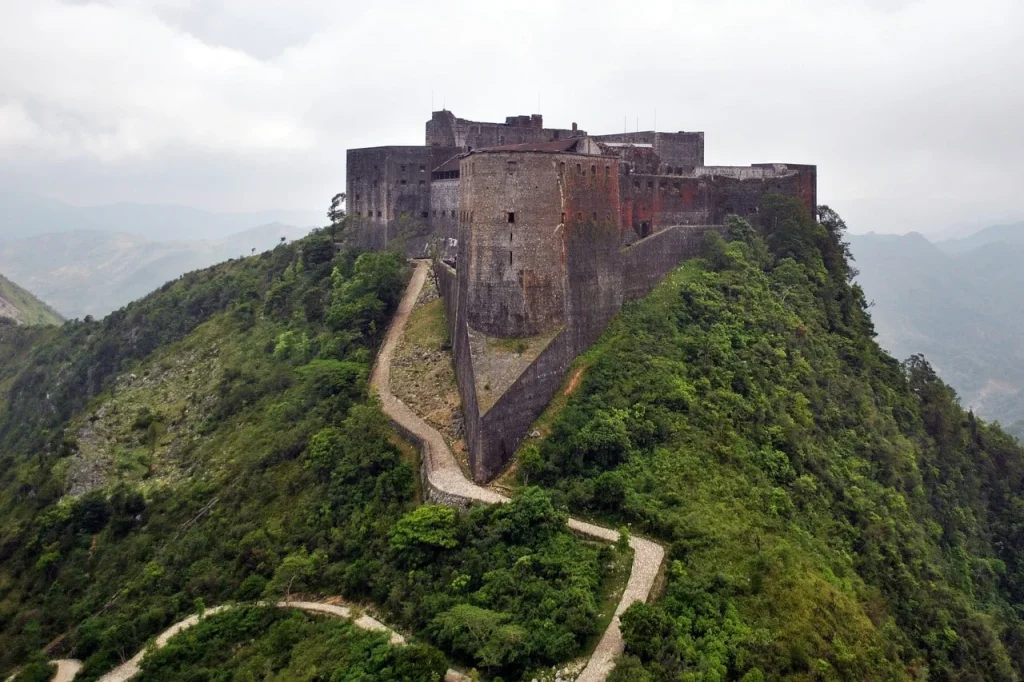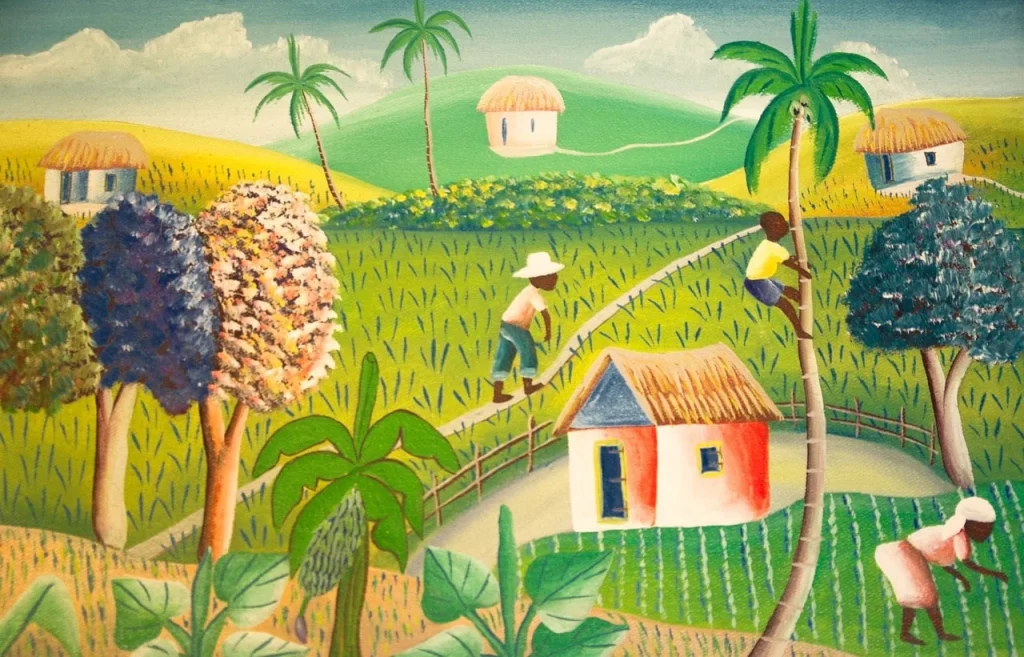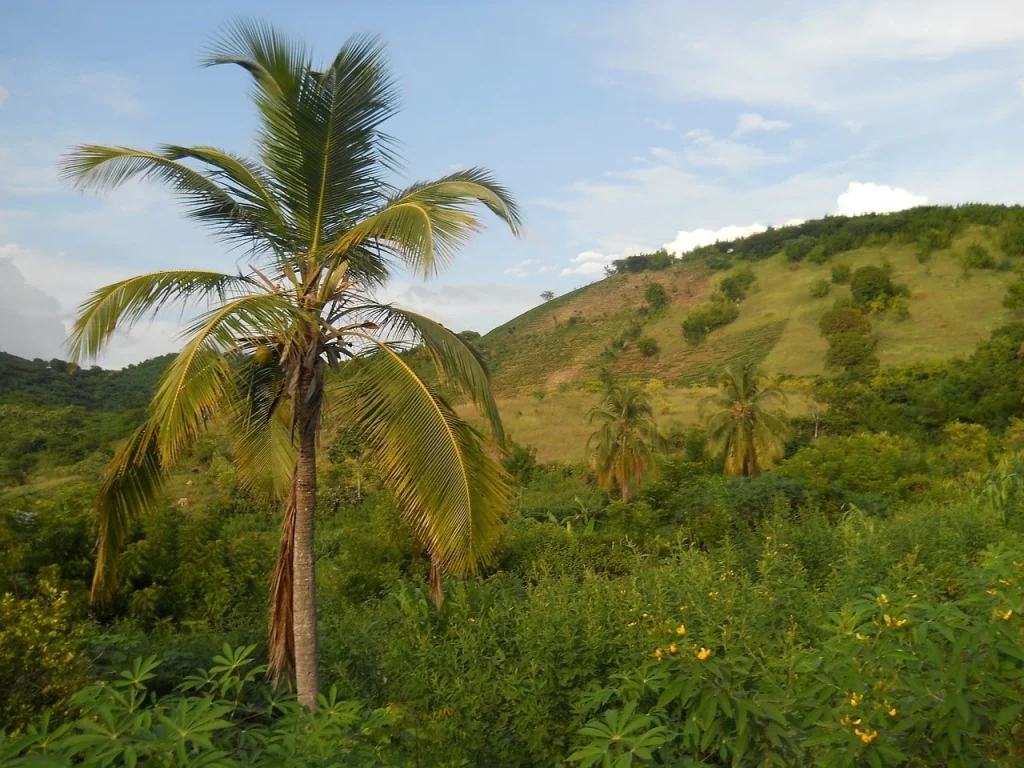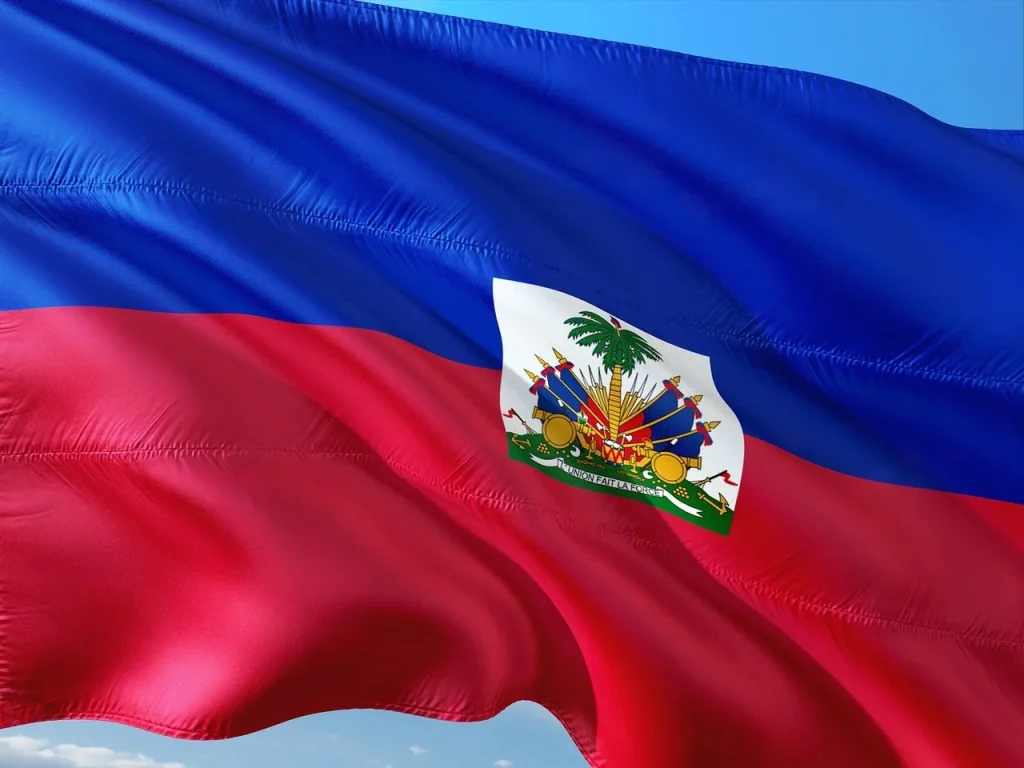Did you know that Haiti is a country with a revolutionary past and a hopeful future? Often heard in the news for its challenges, Haiti’s true essence is found in its rich traditions, influential arts, and dynamic history.
As we uncover some fun facts about Haiti, you’ll gain a new perspective on this Caribbean nation, understanding its pivotal role in global history and the vibrant culture that thrives there today.
Haiti is not a place where one learns to live cautiously.
Edwidge Danticat
Haiti Facts
Let’s start our journey into the fascinating world of Haiti, starting with the facts. Read carefully because there is a quiz at the end of this page to test your knowledge.
- The island is the site of the first successful slave revolt in history.
- Jean-Jacques Dessalines, one of the leaders of the revolution, declared independence in 1804.
- The national palace was destroyed in the 2010 earthquake, which was one of the most powerful in the region’s history.
- Voodoo is an officially recognized religion, deeply rooted in the culture and traditions.
- Over 60% of the population relies on subsistence farming for their livelihood.
- It was once known as the “Pearl of the Antilles” due to its richness and beauty.
- Tourism is an emerging industry, despite the challenges faced by the country.
- More than 95% of the forests have been cleared, leading to severe deforestation.
- The national currency is the gourde, named after a type of vegetable.
- Creole and French are the official languages, reflecting its colonial past.
- Rara is a form of festival music that is unique and deeply rooted in its traditions.
- The Citadelle Laferrière is the largest fortress in the Western Hemisphere.
- The Taíno people were the original inhabitants before European colonization.

- Port-au-Prince is known for its vibrant street art scene, which reflects the culture and struggles of its people.
- The national flower, the hibiscus, is a symbol of the island’s tropical beauty.
- Many Haitian proverbs are passed down orally, encapsulating wisdom and cultural values.
- The national dish is “griot,” made from fried pork and often served with plantains.
- Vodou ceremonies often involve music, dance, and spirit possession.
- It shares the island of Hispaniola with the Dominican Republic, yet the two countries have very distinct cultures.
- Jacmel, a coastal town, is known for its well-preserved French colonial architecture.
- Kanaval is one of the most famous festivals, celebrated with parades, music, and dancing.
- It is the poorest country in the Western Hemisphere, yet its people are known for their resilience and creativity.
- Many famous artists and writers have Haitian roots, including Jean-Michel Basquiat.
- Radio is the most important source of news and information for the majority of the population.
- The island has several unique species of flora and fauna found nowhere else in the world.
- Tap-taps, brightly colored buses, are a common form of public transportation.
- It has the highest mountain in the Caribbean, Pic la Selle, which rises to 2,680 meters.
- The national anthem, “La Dessalinienne,” is named after one of its founding fathers.

- Iron market in Port-au-Prince is a significant cultural and economic hub.
- Soccer is the most popular sport, with a passionate following across the country.
- Many people in rural areas rely on traditional medicine practices for healthcare.
- The country has produced notable leaders and thinkers in the Caribbean and Latin American contexts.
- Several historical sites and monuments commemorate the revolutionary struggle and independence.
- It has a significant diaspora, particularly in the United States and Canada.
- The country is prone to natural disasters, including hurricanes and earthquakes.
- The Iron Market in Port-au-Prince is a significant cultural and economic hub.
- Gold mining has potential, though it remains largely untapped.
- Many species of birds are endemic, making it a unique spot for birdwatchers.

- The art of “naïve painting” is well-known internationally for its vibrant colors and simplicity.
- French influence is evident in the cuisine, language, and education system.
- Many traditional dances, such as Yanvalou, have origins in African rituals.
- The economy heavily relies on remittances from the diaspora.
- Rice is a staple food, often served with beans in a dish known as “diri ak pwa.”
- Deforestation has led to significant environmental challenges, including soil erosion.
- The Petionville suburb is known for its nightlife and cultural activities.
- Carnival celebrations are a major event, attracting participants from all over the world.
- Artisanal crafts, such as metal sculptures and beadwork, are popular among tourists.
- The name “Ayiti” means “land of high mountains” in the native Taíno language.
- Mangoes are a significant export, with over 140 varieties grown.
- Traditional herbal remedies play an essential role in healthcare, especially in rural communities.
Haiti Myths

Now that we’ve covered the facts, let’s continue with some common myths and misconceptions. It’s time to separate the truth from the fiction.
- Haiti Is Constantly Violent and Dangerous
It is often portrayed that Haiti is unceasingly violent and dangerous. While it is true that certain areas experience higher crime rates, much of the country remains peaceful and is inhabited by welcoming people. Many tourists and volunteers have safely experienced Haiti’s rich culture and natural beauty. - Haitians Practice Widespread Voodoo
Voodoo is commonly associated with Haiti to an exaggerated extent. In reality, while Voodoo is an important religion for some Haitians, reflecting rich African roots mixed with Christian elements, the majority of the population identifies as Christian. Voodoo is respected among many as a significant cultural heritage rather than a daily practice for all. - There Is No Economic Activity in Haiti
It is mistakenly believed that economic activity is nonexistent. Although Haiti faces economic challenges, it has a functioning economy with agriculture, manufacturing, and services sectors. Local businesses and international investments contribute to its GDP, and there is a vibrant informal economy. - Haiti Has No Natural Beauty or Tourist Areas
Contrary to the misconception, it boasts beautiful natural landscapes that are often overlooked. The country is home to stunning beaches, mountains, and waterfalls, which are enjoyed by both locals and tourists. Efforts are made by the community to preserve these sites and promote eco-tourism. - Haitians Are Not Educated
This myth inaccurately reflects the reality in Haiti, where education is highly valued. Schools are widespread, and literacy rates have been improving significantly over the years. Many Haitians also pursue higher education both locally and abroad, contributing professionally in various fields globally.
Haiti Quotes

We continue at the quotes section. Feel free to share more quotes in the comments and I will happily add them to the list.
In Haiti, ‘you are the life of the party’ means ‘you are responsible for bringing the party to life.’
Dimitry Elias Léger
Dimitry Elias Léger, a Haitian author, emphasizes the communal and lively spirit that Haitians bring to social gatherings, celebrating their vibrant culture.
We have a country to build. Our responsibility is to the ancestors who created the nation and to the generations yet unborn.
Michel Martelly
Michel Martelly, a Haitian musician and former President of Haiti, speaks passionately about the duty to continue developing Haiti, honoring both its historical legacy and future potential.
To reach the heart of Haiti, you must meet the people, learn their stories.
Sean Penn
Sean Penn, an American actor and humanitarian, discusses the importance of personal connections and understanding the personal histories of Haitian people to truly appreciate the nation.
Haiti itself was a character in my childhood stories, a place of high drama and proud histories.
Roxane Gay
Roxane Gay, a Haitian-American writer, depicts Haiti as a central figure in her narratives, filled with powerful tales and a strong sense of identity.
In Haiti, the future of democracy, human rights, and economic modernization hinges on one word: education.
Paul Farmer
Paul Farmer, an American anthropologist and physician, stresses the critical role of education in advancing Haiti’s political, social, and economic development.
Haiti FAQ

Moving forward from the quotes, we come to the FAQ section. Keep these questions in mind, as they will help you ace the upcoming quiz.
- What is Haiti known for?
It is renowned for its vibrant culture, particularly its music and art. It’s also famous for its historical significance as the site of the only successful slave rebellion, leading to its independence in 1804. - What languages are spoken in Haiti?
Haitian Creole and French are the official languages of Haiti. Haitian Creole, influenced by French and African languages, is spoken by nearly the entire population, while French is used in formal settings. - What is the capital of Haiti?
The capital is Port-au-Prince. It is the largest city in the country and plays a central role in Haitian economy, politics, and culture. - What is the traditional cuisine like in Haiti?
Haitian cuisine is a delicious blend of Creole, African, and French influences. Popular dishes include griyo (fried pork), diri ak pwa (rice and beans), and soup joumou (a pumpkin soup traditionally consumed on Independence Day). - What are some popular tourist attractions in Haiti?
Popular attractions include the Citadelle Laferrière, a large mountaintop fortress in northern Haiti, the beautiful beaches of Jacmel, and the historic Iron Market in Port-au-Prince.
Haiti Trivia

Buckle up for a thrilling quiz! If you don’t score any points, prepare to be crowned the ‘Emperor of Errors’ in Haitian trivia.
Conclusion
Finally, as we consider the myriad of facts about Haiti, from its historical significance to its present-day challenges and triumphs, let’s keep our minds and hearts open to learning more. Haiti offers lessons in resilience, culture, and human spirit.
By embracing these lessons, we continue to grow and connect with the world in meaningful ways. Till next time, stay curious and explore more. Cheers.


